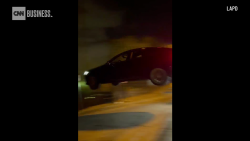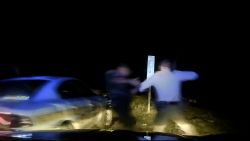Tesla will recall all 53,822 vehicles with its “full self-driving” driver-assist feature after it was intentionally programmed to slowly roll through stop signs in some scenarios.
The recall will impact Model S, X, 3 and Y vehicles that have its beta version of the “full self-driving” software enabled. “Full self-driving” is a controversial driver-assist feature that aims to one day allow cars to drive themselves.
The technology sometimes steers Tesla vehicles smoothly and obeys traffic rules like stopping for red lights. But in other cases it has proved inconsistent, according to accounts from alarmed drivers using the software. Telsa says that “full self-driving” requires an attentive driver who is ready to take full control of the car at any time.
“Full self-driving” has been capable of rolling through stop signs since the release of the first version in October 2020. Tesla decided to disable the function following meetings this month with the National Highway Traffic Safety Administration, which regulates motor vehicles.
“The Vehicle Safety Act prohibits manufacturers from selling vehicles with defects posing unreasonable risks to safety, including intentional design choices that are unsafe. If the information shows that a safety risk may exist, NHTSA will act immediately,” the administration said in a statement.
Tesla will disable the function as soon as this month in an updated version of “full self-driving” software that’s released over the internet, according to a document the automaker filed. Drivers won’t need to take their vehicles to be serviced.
Tesla did not immediately respond to a request for comment.
The recalled feature, called “rolling stop,” allowed vehicles to travel through all-way stop intersections at up to 5.6 mph under certain conditions. Drivers had to set their vehicle to a “full self-driving” style that included the feature. The vehicle’s “chill” setting, the setting a user can select that drives the most conservatively of the options Tesla gives drivers, is not described as including the feature. The other settings, “average” and “assertive,” include the feature.
The “rolling stop” function also required that no relevant moving cars or pedestrian or bicyclists were detected near the intersection. The function wouldn’t activate without sufficient visibility, and all roads entering the intersection need to have a speed limit of no more than 30 mph.
“If all the above conditions are met, only then will the vehicle travel through the all-way-stop intersection at a speed from 0.1 mph up to 5.6 mph without first coming to a complete stop,” the recall document states.
Tesla said that it is not aware of any collisions, injuries or fatalities related to the feature.
The US government has been more proactive of late in taking action on new car features that may introduce safety risks. Tesla said in December that it would no longer allow people to play video games on the touchscreens of its vehicles while they are in motion, following a NHTSA investigation.
The US government does not currently have any performance standards for driver-assist features like Tesla’s “full self-driving.” It launched an investigation last year into Teslas rear-ending emergency vehicles while using the automaker’s more rudimentary driver-assist software, Autopilot.
























